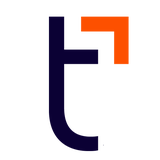
Table of contents
- 1.The National Average of Employee Benefits Cost
- 2.Fixed Cost Projections
- 3.Common Blind Spots for Business Owners
- 4.Forgetting administrative costs
- 5.Unexpected annual increases in health costs
- 6.Fluctuating benefits status
- 7.Costly compliance mistakes
- 8.TriNet Has You Covered with Benefits and Payroll Administration
The decision to bring on a new employee can never be taken lightly. Each new team member affects the culture of your small business — your finances, too.
When thinking through a new employee’s compensation package, it’s important to remember that the cost of hiring someone goes far beyond their base salary. Compensation can include the cost of their benefits and employee perks. How much do benefits cost per employee? Let's take a closer look at the cost analysis of bringing on a new employee and how to best mitigate those expenses.
The National Average of Employee Benefits Cost
When creating your benefits package and forecasting costs for your business, it’s helpful to use informative benchmarking data to guide your decisions. A great place to start is by reviewing data from the U.S. Bureau of Labor Statistics to get an idea of what the costs of employee benefits are across the U.S.
Civilian workers | State and local government workers | Private industry workers | |
Average hourly cost of employee benefits | $14.41 | $23.57 | $13.04 |
Average hourly cost of salary and wages | $31.80 | $37.80 | $30.90 |
Average hourly total compensation | $46.21 | $61.37 | $43.94 |
For civilian workers, the average cost for employers paying for employee benefits equals $14.41 per hour. The average salary and wages are $31.80 per hour. When totaled together, the average total compensation is $46.21 per hour.
For state and local government workers, the average benefits cost is $23.57. The wages and salaries average is $37.80. The average total compensation is $61.37 per hour.
For private industry workers, the average benefits cost is $13.04 per hour. The wages and salary and average is $30.90 per hour. The average total compensation is $43.94 per hour.
(To compile figures for the civilian economy, the Bureau includes data from private industry and state and local government. It excludes federal government workers. Also, the private industry figures do not include the self-employed, private household workers, and the agricultural sector.)
For a more detailed breakdown on national averages based on percentiles, you can view the report on “Employer Costs of Employee Compensation” and see how your plan compares.
Fixed Cost Projections
When planning and projecting your budget for new hires each year, it’s important to factor in all the personnel-related costs in addition to salaries. This includes costs associated with recruitment, training and benefits. For example, recruitment can cost a business up to $4,700 per hire in 2023, up from $4,129 in 2019. That's an approximate 14% increase from 2019 to 2023.
In addition to this, ATD reports that in 2021, companies spent on average $1,280 per employee on workplace learning. Because most employees need up to 6 months to be fully onboarded into their roles, it can take quite some time to see the returns on your investment. Finally, when you add the cost of health benefits and office perks like free lunch or coffee, someone’s actual compensation can cost an employer 1.25 to 1.4 times the actual cost of the new hire’s base salary, according to Investopedia. So, if you’re paying an employee $50,000 per year, this may actually cost you $62,500-$70,000 with the additional costs of benefits.
Therefore, before hiring an employee, it’s important to know how much your fixed benefits program and recruitment costs would be.
Common Blind Spots for Business Owners
When it comes to forecasting the cost of your employee benefits, there are some common oversights small business owners should watch out for.
Forgetting administrative costs
The time and labor companies devote to administering healthcare benefits to employees can be significant, especially when it's done manually. This is one of many areas where HR software service providers like TriNet can be cost-effective . Outsourcing HR can streamline paper-driven processes and free up the time of your team to focus on more meaningful areas of work. It can enhance accuracy, too, which makes you less vulnerable to concerns that can be costly.
Unexpected annual increases in health costs
Healthcare costs continue to rise, and with it the costs of health-related benefits. Beyond government regulations, some drivers of these cost increases can include:
- Population growth
- Population aging
- Disease prevalence or incidence
- Medical service utilization and cost
- Specialty prescription drug costs
There are several reasons why health insurance premium costs are projected to continue increasing. Although inflation saw significant changes in 2023, the impact on to the healthcare sector tends to be more gradual because of things like contracts between insurers and medical providers which are typically set for several years. Also, with the potential long-term effects of the pandemic, more workers and their families may be facing with chronic conditions, which may be exacerbated by delays in care.
When conducting employee benefits planning, employers should assume health insurance premiums will most likely increase each year at a rate of 7%-8%. This helps with cost management as you deal with future payroll expenses.
Fluctuating benefits status
While an employee may start off their career needing an individual/single health benefits plan, this situation could change as they age. They might add coverage for a spouse, partner or children. Naturally, this change may increase the cost of their benefits package for the employer, potentially putting a strain on profit margins.
Although the costs of fluctuating benefits can be challenging for your budget, having employees who are not happy or healthy can be even more detrimental for employee retention. And keep in mind — the well-being of the people you hire can make the difference between whether you fail or succeed as a company. If you manage benefits administration well, your investment can pay off with higher employee satisfaction.
Costly compliance mistakes
Some common mistakes in paperwork can result in financial penalties and result in increased employee costs. These include:
- Missing enrollment
- Not having proper documentation on file
- Incorrectly charging employees for their coverage
- Failing to terminate coverage within the proper time frame
If your business doesn't stay updated on regulatory changes, you could be hit with unexpected costs related to benefits compliance. The Affordable Care Act (ACA), Family and Medical Leave Act (FMLA) and other regulations can tax your HR capabilities. According to a 2022 Ernst & Young (EY) study, 1 in 5 payrolls contain errors costing about $291 per error on average, not including the added cost of potential compliance penalties and the time to resolve the mistakes.
Besides these potential consequences, frequent challenges in workplace benefits and payroll can impact employee morale. This could potentially lead to higher turnover and affect the company’s reputation. One of the best ways to mitigate these concerns in payroll and benefits administration is by working with an expert PEO.
TriNet Has You Covered with Benefits and Payroll Administration
Getting employee benefits administration handled involves a lot of moving parts, which is where the right software and expertise can help. Fortunately, TriNet makes benefits administration easier and cost effective for small to medium sized businesses. From plan selection and payroll deductions to open enrollment and compliance support, TriNet provides access to benefit offerings that help support your employees’ needs while easing the administrative burden on your HR department. Also, TriNet’s software can automate benefit deductions and payroll administration, making benefits and payroll administration more streamlined and less vulnerable for errors.
TriNet can also help optimize costs. PEO customers report 37% annual cost savings per employee on health benefit costs. If you're ready to transform the way your business carries out benefits enrollment and administration, contact a TriNet representative today!
This article is for informational purposes only, is not legal, tax or accounting advice, and is not an offer to sell, buy or procure insurance. TriNet is the single-employer sponsor of all its benefit plans, which does not include voluntary benefits that are not ERISA-covered group health insurance plans and enrollment is voluntary. Official plan documents always control and TriNet reserves the right to amend the benefit plans or change the offerings and deadlines.
This article may contain hyperlinks to websites operated by parties other than TriNet. Such hyperlinks are provided for reference only. TriNet does not control such web sites and is not responsible for their content. Inclusion of such hyperlinks on TriNet.com does not necessarily imply any endorsement of the material on such websites or association with their operators.

TriNet Team
Table of contents
- 1.The National Average of Employee Benefits Cost
- 2.Fixed Cost Projections
- 3.Common Blind Spots for Business Owners
- 4.Forgetting administrative costs
- 5.Unexpected annual increases in health costs
- 6.Fluctuating benefits status
- 7.Costly compliance mistakes
- 8.TriNet Has You Covered with Benefits and Payroll Administration




